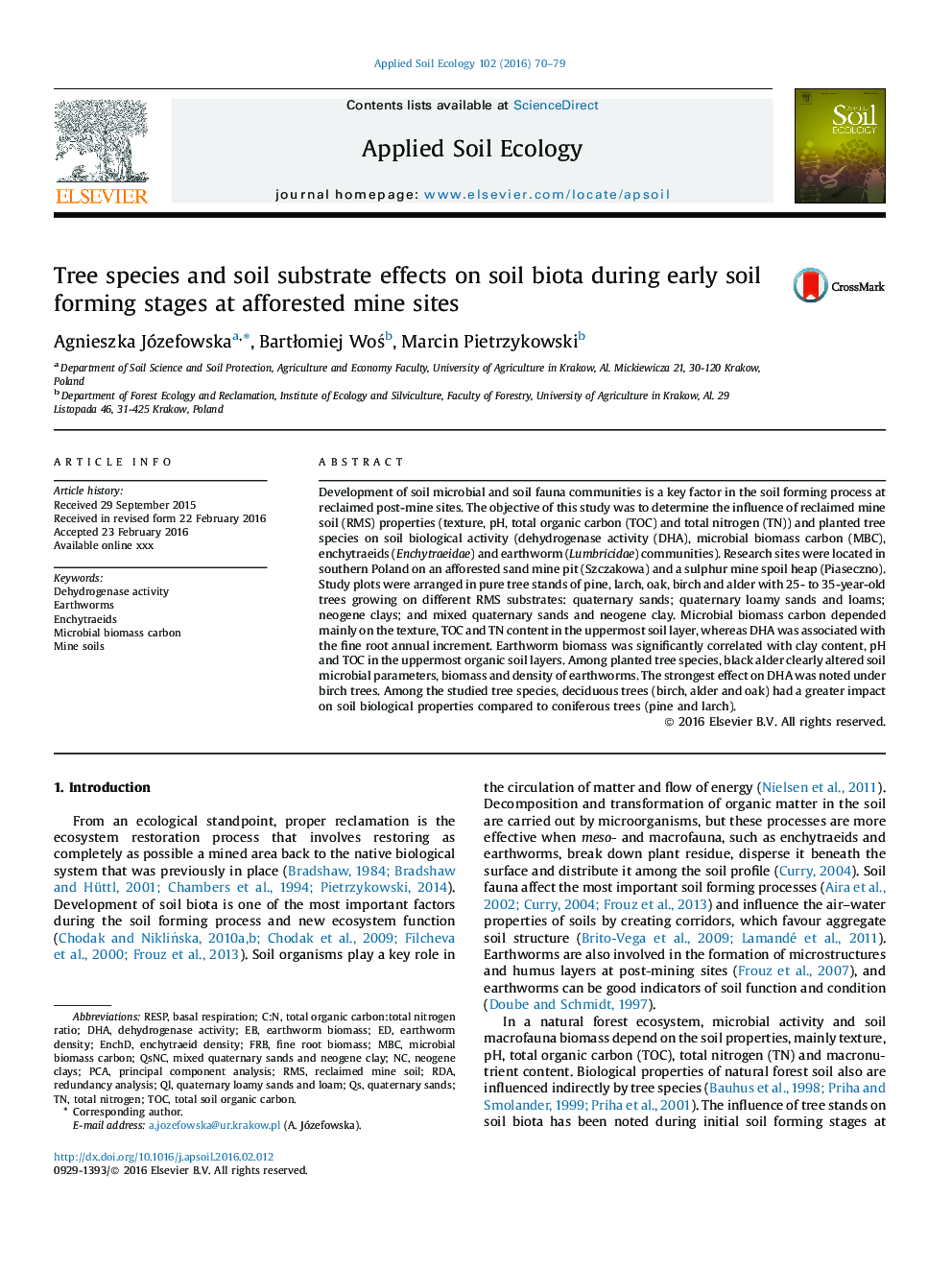| Article ID | Journal | Published Year | Pages | File Type |
|---|---|---|---|---|
| 6297580 | Applied Soil Ecology | 2016 | 10 Pages |
Abstract
Development of soil microbial and soil fauna communities is a key factor in the soil forming process at reclaimed post-mine sites. The objective of this study was to determine the influence of reclaimed mine soil (RMS) properties (texture, pH, total organic carbon (TOC) and total nitrogen (TN)) and planted tree species on soil biological activity (dehydrogenase activity (DHA), microbial biomass carbon (MBC), enchytraeids (Enchytraeidae) and earthworm (Lumbricidae) communities). Research sites were located in southern Poland on an afforested sand mine pit (Szczakowa) and a sulphur mine spoil heap (Piaseczno). Study plots were arranged in pure tree stands of pine, larch, oak, birch and alder with 25- to 35-year-old trees growing on different RMS substrates: quaternary sands; quaternary loamy sands and loams; neogene clays; and mixed quaternary sands and neogene clay. Microbial biomass carbon depended mainly on the texture, TOC and TN content in the uppermost soil layer, whereas DHA was associated with the fine root annual increment. Earthworm biomass was significantly correlated with clay content, pH and TOC in the uppermost organic soil layers. Among planted tree species, black alder clearly altered soil microbial parameters, biomass and density of earthworms. The strongest effect on DHA was noted under birch trees. Among the studied tree species, deciduous trees (birch, alder and oak) had a greater impact on soil biological properties compared to coniferous trees (pine and larch).
Keywords
Related Topics
Life Sciences
Agricultural and Biological Sciences
Ecology, Evolution, Behavior and Systematics
Authors
Agnieszka Józefowska, BartÅomiej WoÅ, Marcin Pietrzykowski,
